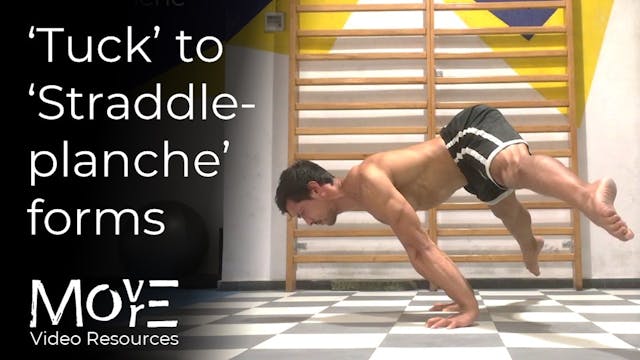Parallettes 'Planche' & 'L-/V-sit'
SAS push (horizontal)
•
3m 30s
THE WHAT:
Developing these two fundamental SAS/S forms on the low-parallettes (or optionally high 'Parallel-bars') is essentially just a shift of modality from floor, to bar-support.
Despite this apparently small difference, it can affect execution quite significantly depending on the individual practitioner, and some may find bars preferable to execution on the floor. An equal experience & capacity on BOTH, however, is always desirable.
LEARN MORE (subscriber-only):
https://drive.google.com/file/d/1kXI-bpfwcX4GLxoCHPa6yxtYADODnAxr/view?usp=drive_link
_____________________
For programming, guidance, & support for your physical practice:
FREE fundamental prehabilitation program: https://www.movemoremp.com/
Online Support (1 to 1 coaching): https://movemoremp.com/onlinesupport/
Elements (standardised programs): https://www.movemoremp.com/elements
[email protected]
Up Next in SAS push (horizontal)
-
'Tuck' to 'Straddle-planche' forms & ...
THE WHAT:
The 'Planche' is a strength-skill based around the capacity to holds one's bodyweight off of the floor in a horizontal/prone position, supported with STRAIGHT-arms. Its difficulty is in/decreased through self-directed 'mechanical-advantage', essentially by extending or flexing one's spi... -
Fundamental 'P-bars' support to 'Pike...
THE WHAT:
Beginning with a fundamental, vertical-support position we develop straight-arm scapular-strength (SASS) in coordination with the global "hollow" structure. This structure is integral to nearly all bodyweight strength work, no matter straight-arm or bent-arm, nor the orientation of the ... -
Rings 'Pike-extension' and 'Tuck-plan...
THE WHAT:
Shifting the capacity to perform a 'Tuck-planche' to the unstable modality of the gymnastics rings. Toward accustoming to this instability, practice starts with the fundmental 'Pike extension' with the same form & executional checkpoints as in the stable 'P-bars' variation. From here, t...



